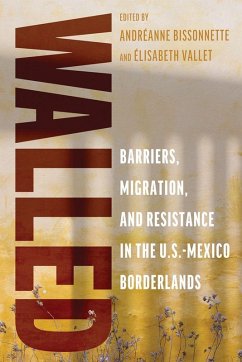In 1993, then-U.S. President Bill Clinton oversaw the construction of the first stretch of the U.S.-Mexico border walls. Since that pivotal moment, every subsequent U.S. president has allowed for the construction of additional miles of walls or fences. Despite his initial pledge to halt the expansion of border walls, in July 2022, President Joe Biden authorized the construction of new sections in four locations within Arizona. This decision underscores the enduring complexity and contentious nature of the U.S.-Mexico border infrastructure. From the bustling San Diego–Tijuana region to the borderlands of Brownsville-Matamoros, the U.S.-Mexico border is marked by extensive stretches of walls. Over the past thirty years, these walls have evolved from purely physical barriers into multifaceted systems encompassing administrative, legal, legislative, and biometric components. This volume invites readers to reflect on the transformations of the border since the construction of the initial fourteen miles of wall, and the subsequent addition of 1,940 miles. It provides a comprehensive exploration of the border’s evolution, and its profound and lasting impacts. Bringing together recognized scholars in border studies, Walled delves into the varied manifestations and lived experiences associated with U.S.-Mexico border walls. The introduction by AndrÉanne Bissonnette and Élisabeth Vallet offers a thorough review of the border walls’ thirty-year history, placing it within a global context. Contributions offer diverse perspectives of the border experience, from state policies and migrant experiences to the daily lives of border residents. Topics such as militarization, migration, artistic resistance, and humanitarian aid are carefully examined. This volume is an essential resource for policymakers, activists, scholars, and anyone seeking to understand the intricate realities of border communities and the far-reaching consequences of border policies. Contributors Susana BÁez-Ayala AndrÉanne Bissonnette Mathilde Bourgeon Silvia M. ChÁvez-Baray Irasema Coronado Thalia D’Aragon-GiguÈre Erin Hoekstra Anthony Jimenez T. Mark Montoya Eva M. Moya Scott Nicol HÉctor Antonio Padilla Delgado Lisa Sun-Hee Park Tony Payan Patricia Ravelo-Blancas David A. Shirk Allyson Teague Élisabeth Vallet
Bitte wählen Sie Ihr Anliegen aus.
Rechnungen
Retourenschein anfordern
Bestellstatus
Storno








